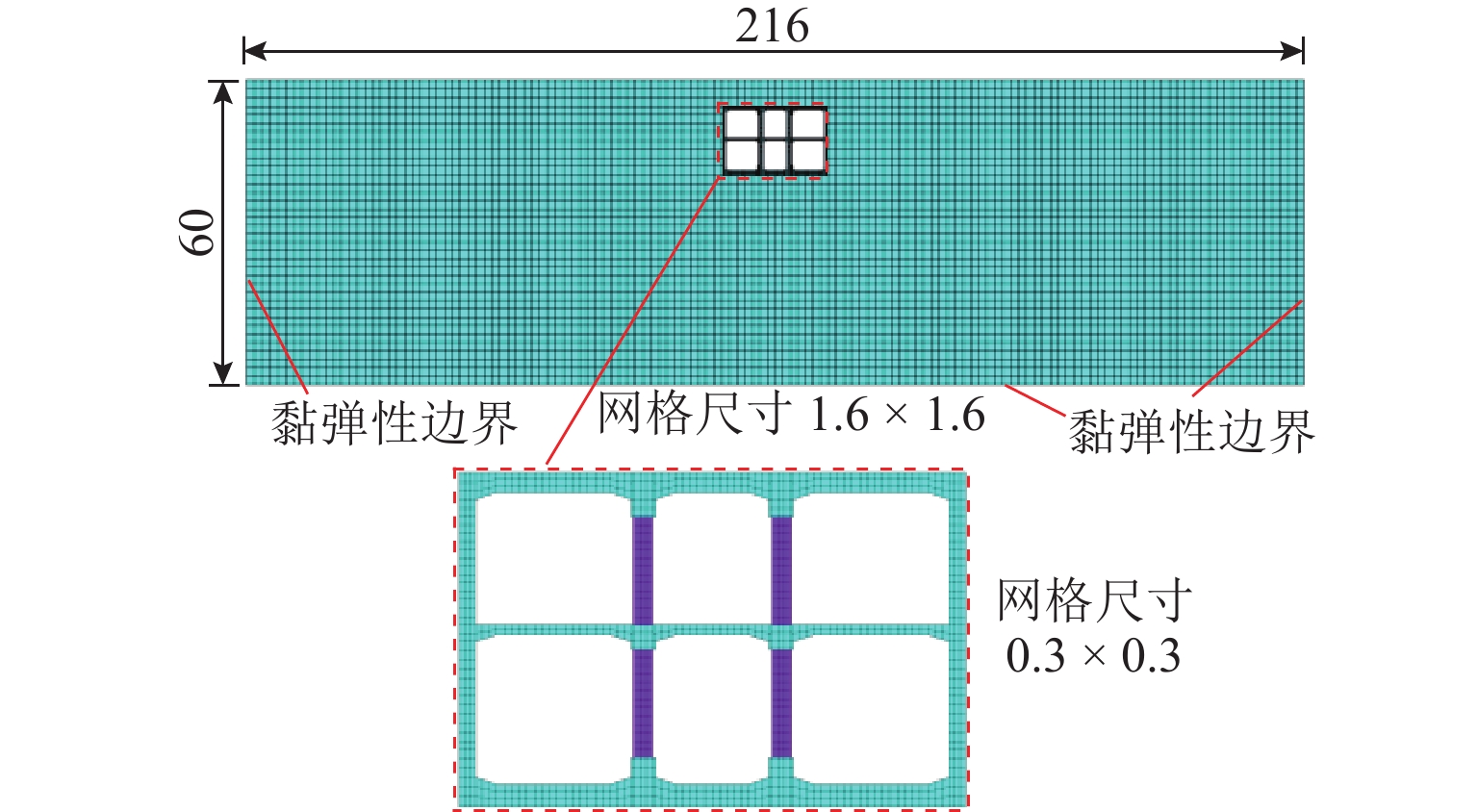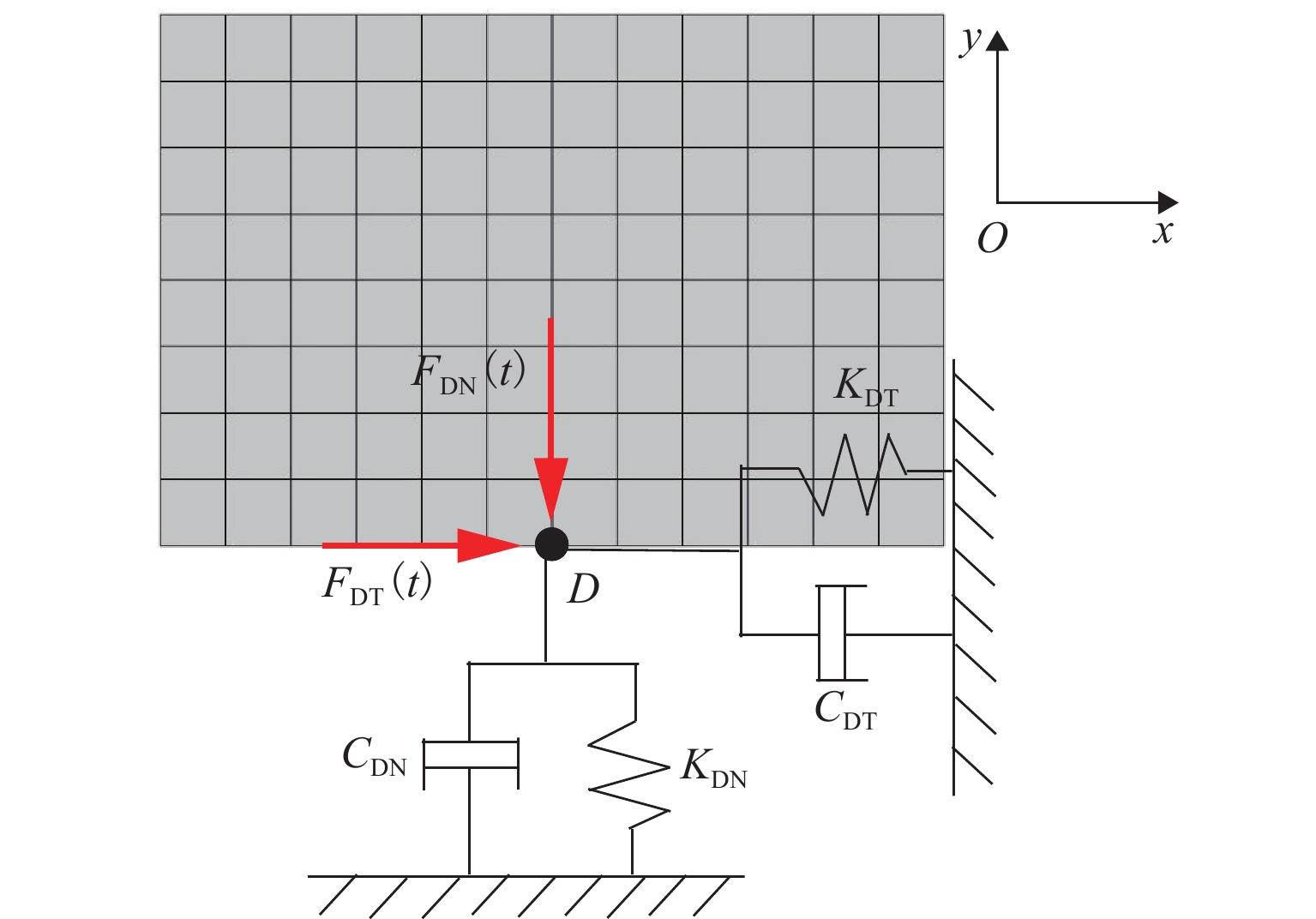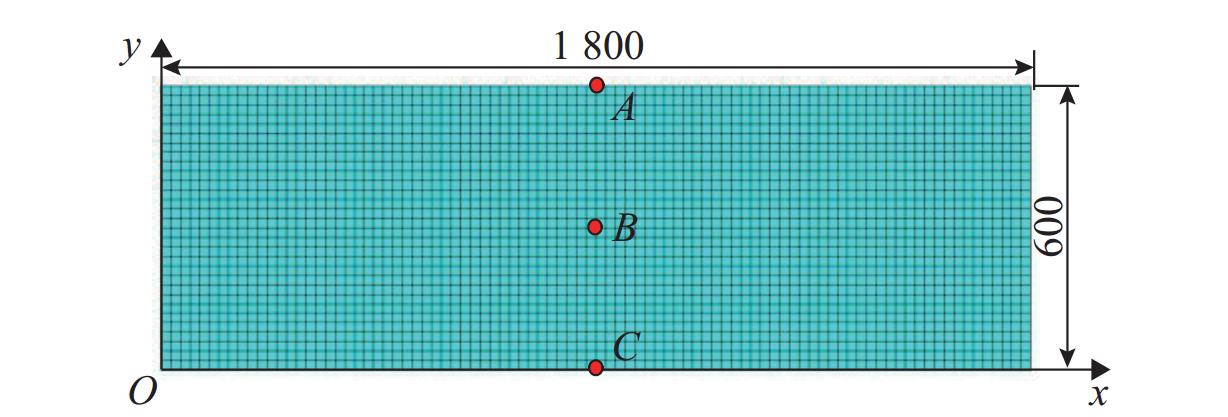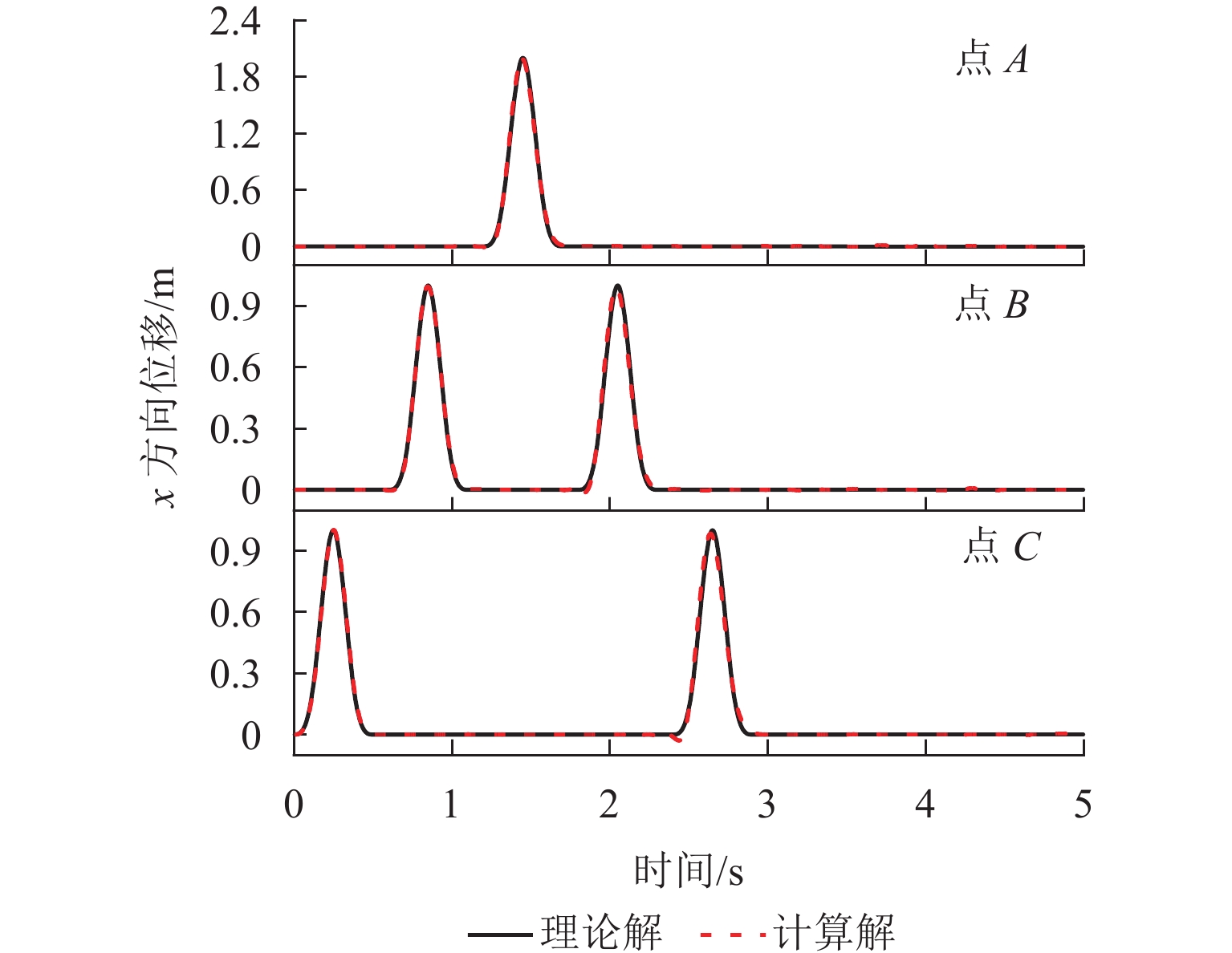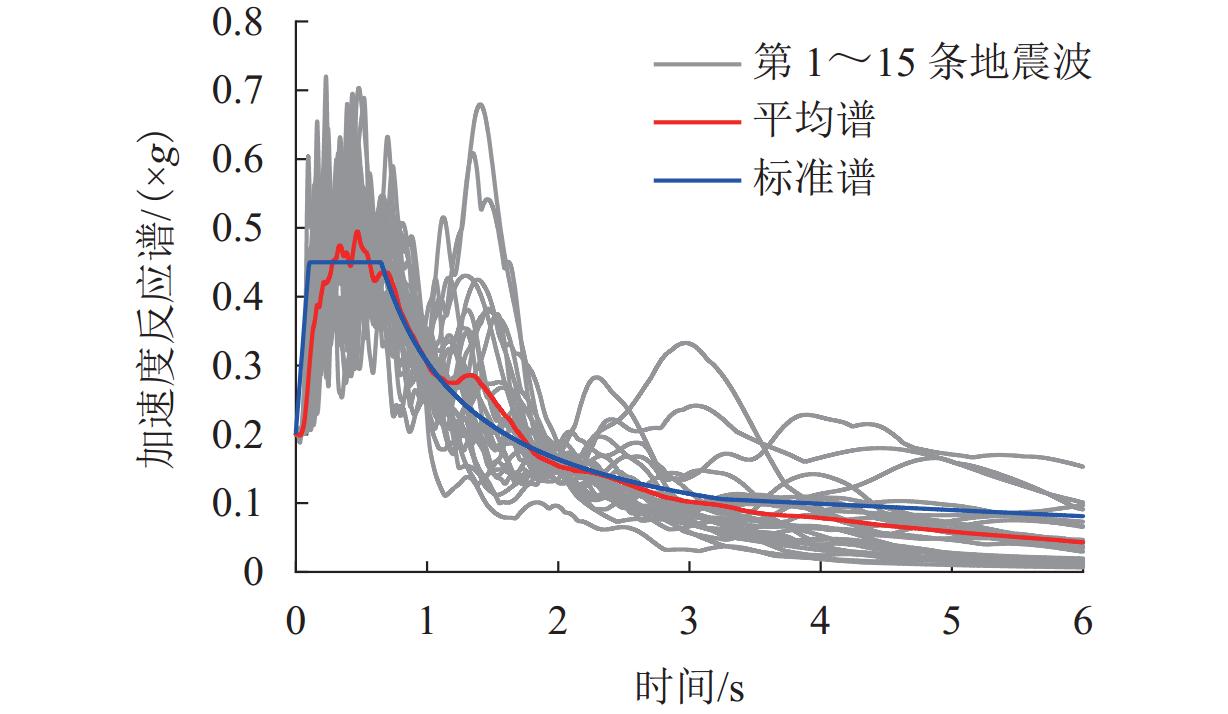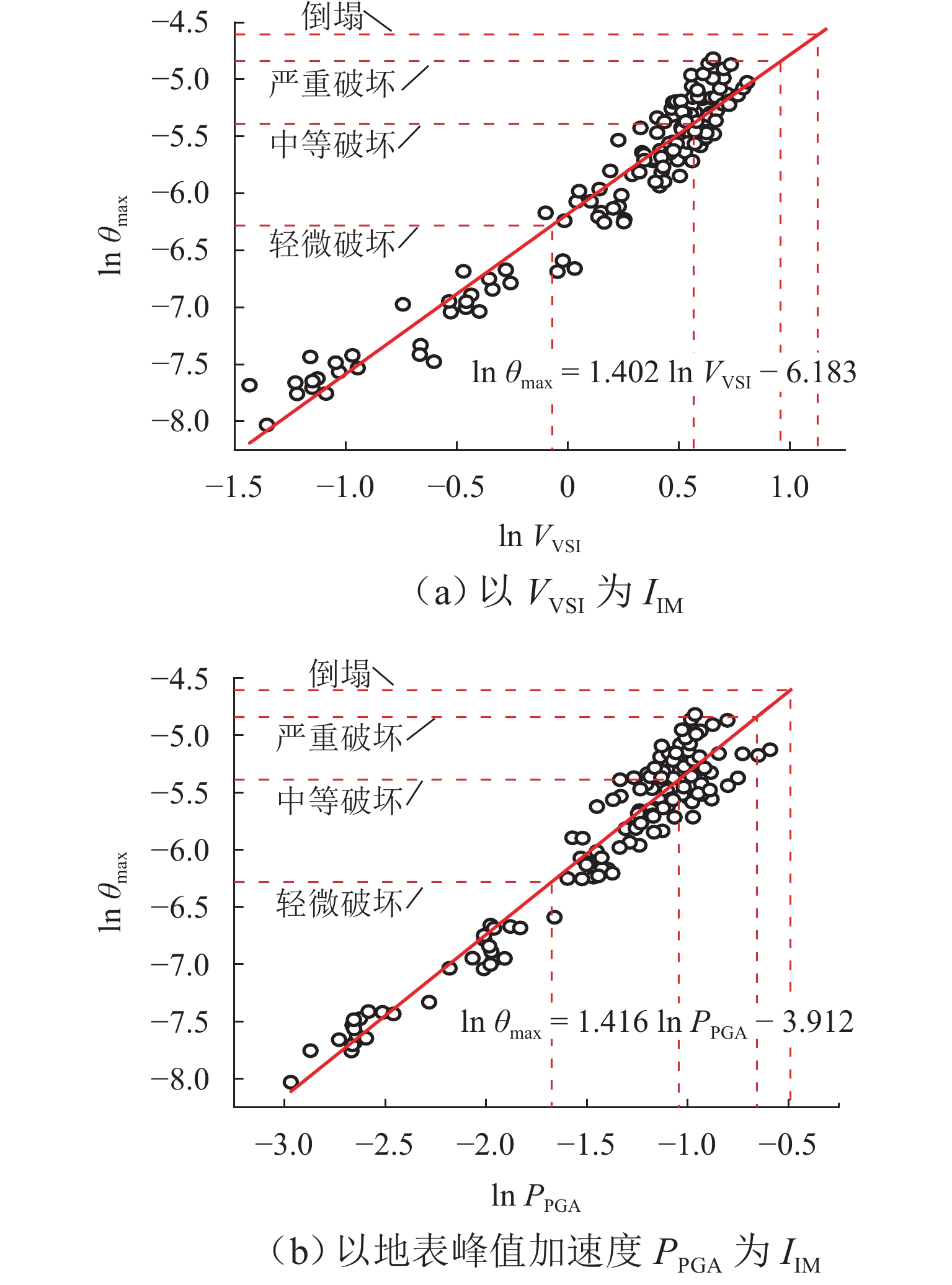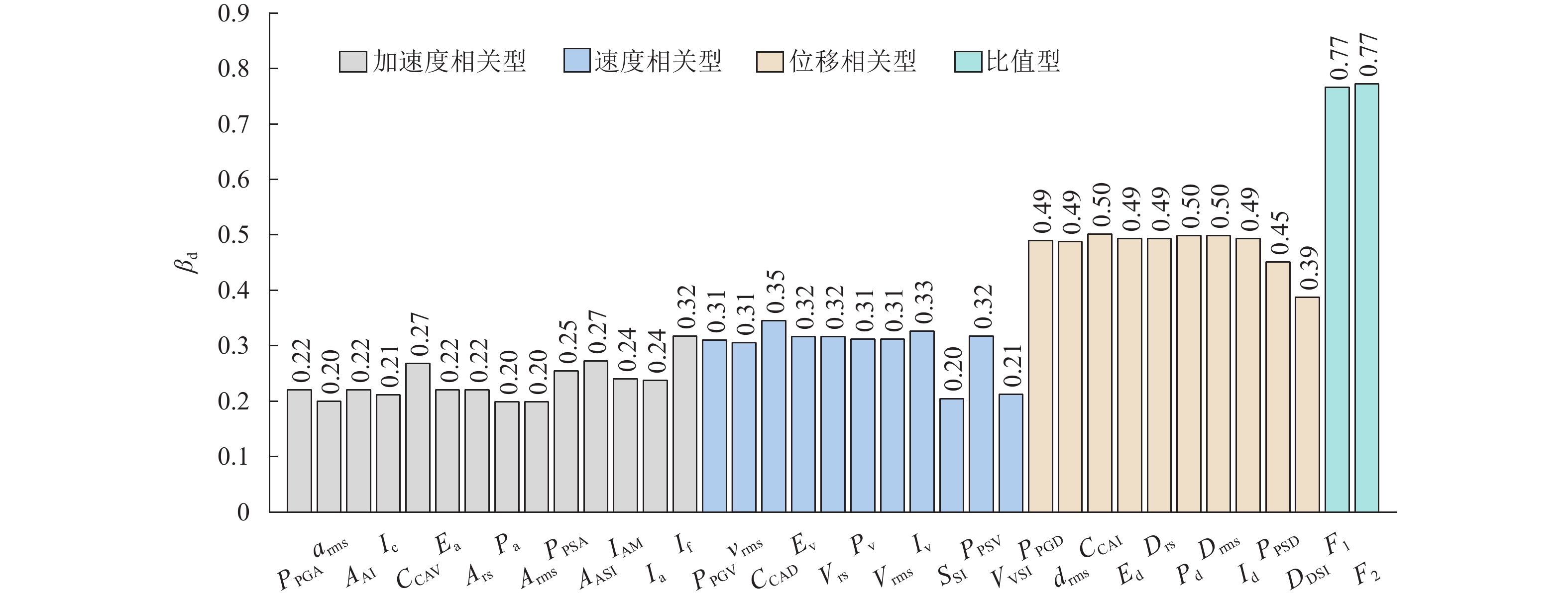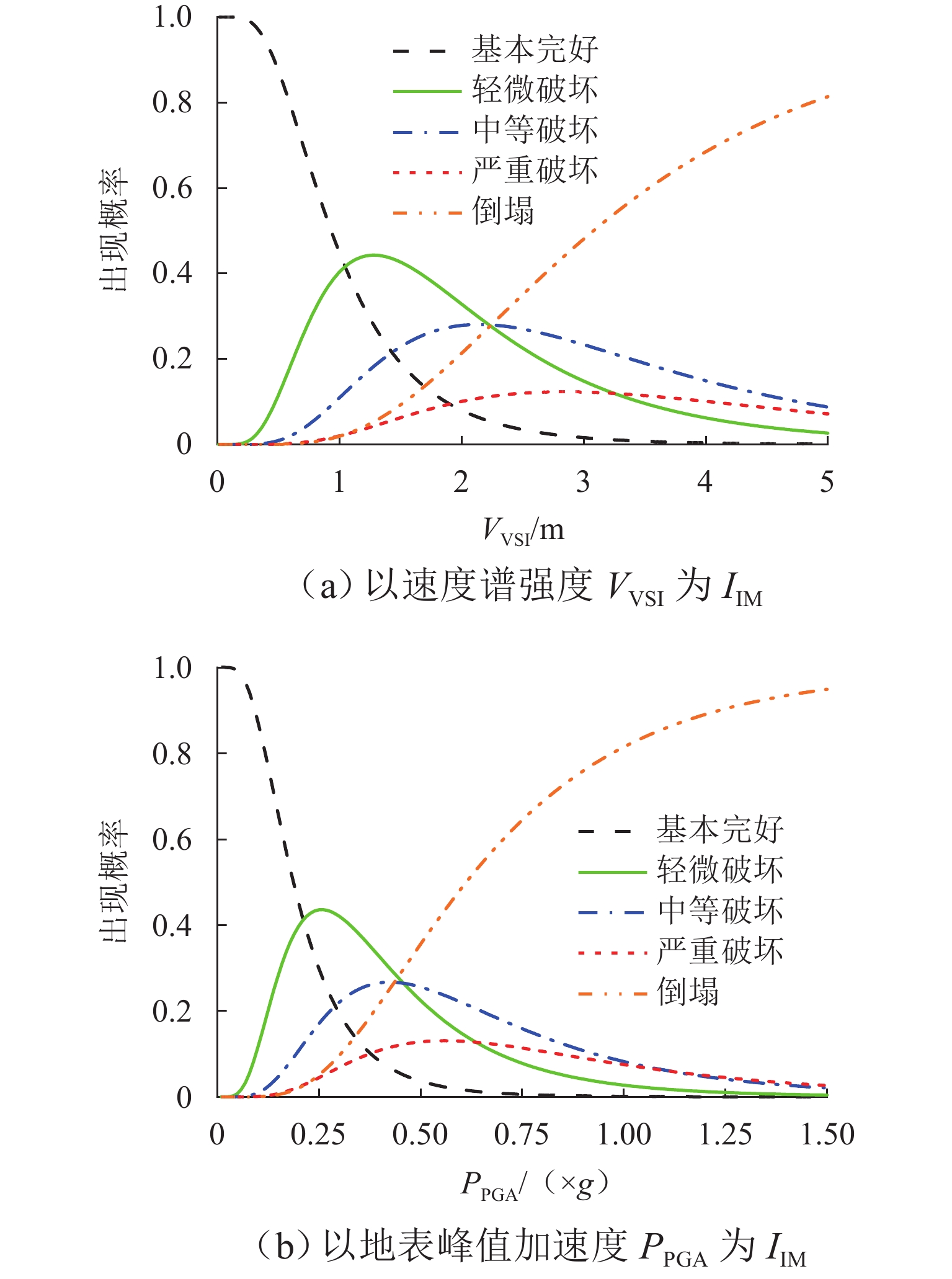Seismic Fragility Analysis of Shallow-Buried Subway Station Structure in Loess Strata
-
摘要:
为研究黄土场地地铁车站的地震易损性,以黄土地区某典型两层三跨地铁车站结构为例,基于黏弹性边界的地震动输入方法对该地铁车站结构进行增量动力分析(IDA),对37个地震动强度指标的有效性、实用性和效益性进行综合评价,选出适合该场地条件和车站结构断面形式的地震动强度指标;并采用双参数对数正态分布模型建立该地铁车站结构的地震易损性曲线和破坏状态概率曲线,以此得到该地铁车站结构在某一强度地震作用下各性能水准的超越概率和发生不同破坏状态的概率. 结果表明:加速度、速度相关型指标更适合作为地震动强度指标来预测地下结构的地震响应,位移相关型以及比值型指标不宜作为地震动强度指标;多遇地震作用下车站结构发生破坏的概率较小,设防地震作用下车站结构以轻微破坏为主,罕遇地震作用下车站结构以轻微破坏和中等破坏为主. 研究结果可为黄土地层基于性能的地铁车站的抗震设计提供参考.
Abstract:In order to study the seismic fragility of subway stations situated in loess sites, a typical two-story three-span subway station structure in a loess area was chosen as a representative example, and incremental dynamic analysis (IDA) was conducted on the subway station structure by using the ground motion input method based on viscoelastic boundaries. The results of IDA were then used to comprehensively evaluate 37 seismic intensity indices in terms of their effectiveness, practicality, and benefit. Based on this evaluation, seismic intensity indices that were suitable for the site conditions and structural configuration of the subway station were selected. Seismic fragility curves and damage state probability curves for the subway station structure were established using a double-parameter lognormal distribution model. These curves facilitated the determination of the probability of the subway station structure exceeding various performance levels and encountering different damage states under specific seismic intensities. The findings suggest that acceleration-related and velocity-related indices are more suitable as seismic intensity indices for predicting the seismic response of underground structures, while displacement-related and ratio-related indices are not appropriate. Under frequent seismic events, the probability of the subway station structure experiencing damage is relatively low. For design-level seismic events, the structure primarily sustains slight damage. In the case of rare seismic events, the subway station structure is more prone to slight and moderate damage. The results provide a reference for the seismic design of performance-based subway stations constructed on loess strata.
-
表 1 主要计算参数
Table 1. Main calculation parameters
材料 密度/
(kg·m−3)弹性模量/GPa 泊松比 黏聚力/
kPa内摩擦角/(°) 土体 1 650 0.07 0.3 0.03 22 墙、板 2 500 32.50 0.2 2.50 55 中柱(折减) 329 4.14 0.2 2.50 55 表 2 不同性能水准功能描述及损伤限值标定
Table 2. Function description and damage limit calibration for different performance levels
性能水准 功能状态 $ \theta_{\text {max }} $限值/% PL1 结构抗震关键构件基本完好,设备功能完好,可以正常运行 0.21 PL2 结构抗震关键构件发生中等损伤,设备功能整体正常,经修复后可以正常使用 0.46 PL3 结构抗震关键构件发生不可修复的严重破坏,设备功能失常,可保证安全 0.72 PL4 结构功能完全丧失,结构强度和刚度基本退化,可能发生倒塌 1.00 表 3 地震动强度指标选择
Table 3. Selection of seismic intensity indices
类型 编号 名称 定义 加速度相关型 1 地表峰值加速度 ${P_{{\mathrm{PGA}}}} = \max |a(t)|$ 2 加速度谱强度 $ A_{\text{ASI}} = \displaystyle\int_{0.1}^{0.5} {{S _{\mathrm{a}}}} (T,\xi ){\mathrm{d}}T $ 3 加速度平方积分 ${E_{\text{a}}} = \displaystyle\int_0^{{t_{\max }}} {{a^2}} (t){\mathrm{d}}t$ 4 根平方加速度 ${A_{{\text{rs}}}} = \sqrt {\displaystyle\int_0^{{t_{\max }}} {{a^2}} (t){\mathrm{d}}t} $ 5 Housner 加速度
强度${P_{\text{a}}} = \dfrac{1}{{{t_{\mathrm{d}}}}}\displaystyle\int_{{t_1}}^{{t_2}} {{a^2}} (t){\mathrm{d}}t$ 6 Housner 均方根
加速度${A_{{\text{rms}}}} = \sqrt {\dfrac{1}{{{t_{\mathrm{d}}}}}\displaystyle\int_{{t_1}}^{{t_2}} {{a^2}} (t){\mathrm{d}}t} $ 7 地震动均方根
加速度${a_{{\text{rms}}}} = \sqrt {\dfrac{1}{{{t_{\max }}}}\displaystyle\int_0^{{t_{\max }}} {{a^2}} (t){\mathrm{d}}t} $ 速度相关型 8 累计绝对速度 $C_{\text{CAV}} = \displaystyle\int_0^{{t_{\max }}} | a(t)|{\mathrm{d}}t$ 9 谱加速度峰值 $P_{\text{PSA}} = \max {{S _{\mathrm{a}}}\left( {T,\;\xi = 0.05} \right)} $ 10 Arias 强度 $ A_{\text{AI}} = \dfrac{{\text{π}} }{{2g}}\displaystyle\int_0^{{t_{\max }}} {{a^2}} (t){\mathrm{d}}t $ 11 修正的 Arias 强度 ${I_{{\text{AM}}}} = A_{\text{AI}}/n_0^2$ 12 特征强度 $ {I_{\text{c}}} = A_{{\mathrm{rms}}}^{1.5} t_{\mathrm{d}}^{0.5} $ 13 复合加速度 ${I_{\text{a}}} = P_{\text{PGA}} t_{\mathrm{d}}^{1/3}$ 14 Faifar 强度 ${I_{\text{f}}} = P_{\text{PGV}} t_{\mathrm{d}}^{0.25}$ 15 地表峰值速度 $P_{\text{PGV}} = \max |v(t)|$ 16 速度谱强度 $ V_\text{VSI}={\displaystyle {\displaystyle\int }_{0.1}^{2.5}{S}_{{\mathrm{v}}}}(T,\xi ){\mathrm{d}}T $ 17 速度平方积分 ${E_{\text{v}}} = \displaystyle\int_0^{{t_{\max }}} {{v^2}} (t){\mathrm{d}}t$ 18 根平方速度 $ {V_{{\text{rs}}}} = \sqrt {\displaystyle\int_0^{{t_{\max }}} {{v^2}} (t){\mathrm{d}}t} $ 位移相关型 19 Housner 速度强度 ${P_{\text{v}}} = \dfrac{1}{{{t_{\mathrm{d}}}}}\displaystyle\int_{{t_1}}^{{t_2}} {{v^2}} (t){\mathrm{d}}t$ 20 Housner 均方根
速度${V_{{\text{rms}}}} = \sqrt {\dfrac{1}{{{t_{\mathrm{d}}}}}\displaystyle\int_{{t_1}}^{{t_2}} {{v^2}} (t){\mathrm{d}}t} $ 21 地震动均方根速度 ${v_{{\text{rms}}}} = \sqrt {\dfrac{1}{{{t_{\max }}}}\displaystyle\int_0^{{t_{\max }}} {{v^2}} (t){\mathrm{d}}t} $ 22 累计绝对位移 $C_{\text{CAD}} = \displaystyle\int_0^{{t_{\max }}} | v(t)|{\mathrm{d}}t$ 23 谱速度峰值 $P_{\text{PSV}} = \max \left {{S_{\mathrm{v}}}\left( {T,\;\xi = 0.05} \right} \right)$ 24 Housner 强度 $ S _{\text{SI}} = \displaystyle\int_{0.1}^{2.5} P_{{\mathrm{PSV}}} (T,\xi = 0.05){\mathrm{d}}T $ 25 复合速度 ${I_{\text{v}}} = P_{{\text{PGV}}}^{2/3} t_{\mathrm{d}}^{1/3}$ 26 地表峰值位移 $P_{\text{PGD}} = \max |d(t)|$ 27 位移谱强度 $D_{\text{DSI}} = \displaystyle\int_{2.5}^{4.0} {{S_{\mathrm{d}}}} (T,\xi ){\mathrm{d}}T $ 28 位移平方积分 ${E_{\text{d}}} = \displaystyle\int_0^{{t_{\max }}} {{d^2}} (t)dt$ 29 根平方位移 ${D_{{\text{rs}}}} = \sqrt {\displaystyle\int_0^{{t_{\max }}} {{d^2}} (t)dt} $ 30 Housner 位移强度 ${P_{\text{d}}} = \dfrac{1}{{{t_{\mathrm{d}}}}}\displaystyle\int_{{t_1}}^{{t_2}} {{d^2}} (t)dt$ 31 Housner 均方根
位移${D_{{\text{rms}}}} = \sqrt {\dfrac{1}{{{t_{\mathrm{d}}}}}\displaystyle\int_{{t_1}}^{{t_2}} {{d^2}} (t)dt} $ 32 地震动均方根位移 ${d_{{\text{rms}}}} = \sqrt {\dfrac{1}{{{t_{\max }}}}\displaystyle\int_0^{{t_{\max }}} {{d^2}} (t)dt} $ 33 累计绝对能量 $C_{\text{CAI}} = \displaystyle\int_0^{{t_{\max }}} | d(t)|dt$ 34 谱位移峰值 $P_{\text{PSD}} = \max {{S _{\mathrm{d}}}\left( {T,\;\xi = 0.05} \right)} $ 35 复合位移 ${I_{\text{d}}} = P_{\text{PSD}} t_{\mathrm{d}}^{1/3}$ 比值型 36 峰值速度与峰值加速度比值 ${{F_1}} = {{P_{\mathrm{PGV}} / P_{\mathrm{PGA}}}}$ 37 峰值位移与峰值速度比值 ${{F_2}} = {{P_{\mathrm{PGD}} / P_{\mathrm{PGV}}}}$ 表 4 不同频遇地震各性能水准超越概率
Table 4. Exceedance probability of each performance level for earthquakes with different frequencies
地震频遇 设计基本加速度/(×g) 超越概率/% PL1 PL2 PL3 PL4 多遇地震 0.07 3.58 0.16 0.01 0 设防地震 0.20 54.70 15.20 4.29 2.03 罕遇地震 0.41 92.37 60.90 34.26 23.14 表 5 不同频遇地震各破坏状态出现概率
Table 5. Occurrence probability of each damage state in earthquake with different frequencies
地震频遇 设计基本加速度/(×g) 出现概率/% DS1 DS2 DS3 DS4 DS5 多遇地震 0.07 96.42 3.43 0.14 0.01 0 设防地震 0.20 45.30 39.68 10.73 2.26 2.03 罕遇地震 0.41 7.63 31.47 26.44 11.12 23.14 -
[1] 杜修力, 李洋, 许成顺, 等. 1995年日本阪神地震大开地铁车站震害原因及成灾机理分析研究进展[J]. 岩土工程学报, 2018, 40(2): 223-236. doi: 10.11779/CJGE201802002DU Xiuli, LI Yang, XU Chengshun, et al. Review on damage causes and disaster mechanism of Daikai subway station during 1995 Osaka-Kobe Earthquake[J]. Chinese Journal of Geotechnical Engineering, 2018, 40(2): 223-236. doi: 10.11779/CJGE201802002 [2] SAYED, M A, KWON, O S, PARK, D, et al. Multi-platform soil-struc1ture interaction simulation of Daikai subway tunnel during the 1995 Kobe earthquake[J]. Soil Dynamics and Earthquake Engineering, 2019, 125: 105643.1-105643.13. [3] 高波, 王峥峥, 袁松, 等. 汶川地震公路隧道震害启示[J]. 西南交通大学学报, 2009, 44(3): 336-341, 374. doi: 10.3969/j.issn.0258-2724.2009.03.005GAO Bo, WANG Zhengzheng, YUAN Song, et al. Lessons learnt from damage of highway tunnels in Wenchuan earthquake[J]. Journal of Southwest Jiaotong University, 2009, 44(3): 336-341, 374. doi: 10.3969/j.issn.0258-2724.2009.03.005 [4] 张威, 李明, 姬云平, 等. 青海门源M6.9地震典型隧道破坏特征分析与启示[J]. 地震工程学报, 2022, 44(3): 661-669.ZHANG Wei, LI Ming, JI Yunping, et al. Analysis and enlightenment of typical failure characteristics of tunnels caused by the Menyuan M6.9 earthquake in Qinghai Province[J]. China Earthquake Engineering Journal, 2022, 44(3): 661-669. [5] 黄勇, 谢亚晨, 田亮, 等. 2023年土耳其7.8级地震交通系统震害与启示[J]. 世界地震工程, 2023, 39(3): 1-15.HUANG Yong, XIE Yachen, TIAN Liang, et al. Earthquake damage and enlightenment from traffic system in 2023 Turkey Ms7.8 earthquake[J]. World Earthquake Engineering, 2023, 39(3): 1-15. [6] 程新俊, 景立平, 崔杰, 等. 沉管隧道接头剪力键抗震性能及减震措施[J]. 西南交通大学学报, 2022, 57(6): 1208-1216. doi: 10.3969/j.issn.0258-2724.20200548CHENG Xinjun, JING Liping, CUI Jie, et al. Seismic performance and damping measures of shear keys for immersed tunnel joints[J]. Journal of Southwest Jiaotong University, 2022, 57(6): 1208-1216. doi: 10.3969/j.issn.0258-2724.20200548 [7] 高波, 王帅帅. 浅埋圆形复合式衬砌隧道动应力响应研究[J]. 西南交通大学学报, 2016, 51(4): 599-606. doi: 10.3969/j.issn.0258-2724.2016.04.001GAO Bo, WANG Shuaishuai. Dynamic response study on shallow circular composite-lining tunnels[J]. Journal of Southwest Jiaotong University, 2016, 51(4): 599-606. doi: 10.3969/j.issn.0258-2724.2016.04.001 [8] 杨步云, 陈俊涛, 肖明. 跨断层地下隧洞衬砌结构地震响应及损伤机理研究[J]. 岩土工程学报, 2020, 42(11): 2078-2087. doi: 10.11779/CJGE202011013YANG Buyun, CHEN Juntao, XIAO Ming. Seismic response and damage mechanism of lining structures for underground tunnels across fault[J]. Chinese Journal of Geotechnical Engineering, 2020, 42(11): 2078-2087. doi: 10.11779/CJGE202011013 [9] 朱辉, 严松宏, 孙纬宇, 等. 地震波斜入射下浅埋偏压双隧道地震响应分析[J]. 振动. 测试与诊断, 2024, 44(2): 259-265, 407.ZHU Hui, YAN Songhong, SUN Weiyu, et al. Seismic response analysis of shallow-buried unsymmetrical loading double tunnel under oblique incidence of seismic wave[J]. Journal of Vibration, Measurement & Diagnosis, 2024, 44(2): 259-265, 407. [10] 黄忠凯, 张冬梅. 软土地层浅埋盾构隧道地震易损性分析[J]. 现代隧道技术, 2020, 57(5): 51-60.HUANG Zhongkai, ZHANG Dongmei. Seismic vulnerability analysis of the shallow-buried shield tunnel in soft soil stratum[J]. Modern Tunnelling Technology, 2020, 57(5): 51-60. [11] 刘立荣, 王海彦, 黄黆. 考虑不确定因素的山岭隧道地震易损性研究[J]. 世界地震工程, 2018, 34(1): 173-178.LIU Lirong, WANG Haiyan, HUANG Guang. Study on vulnerability analysis of rock mountain tunnel considering uncertainties[J]. World Earthquake Engineering, 2018, 34(1): 173-178. [12] 丁祖德, 资昊, 计霞飞, 等. 考虑衬砌劣化的山岭隧道地震易损性分析[J]. 岩石力学与工程学报, 2020, 39(3): 581-592.DING Zude, ZI Hao, JI Xiafei, et al. Seismic fragility analysis of mountain tunnels considering lining degradation[J]. Chinese Journal of Rock Mechanics and Engineering, 2020, 39(3): 581-592. [13] 钟紫蓝, 严智豪, 史跃波, 等. 基于IDA方法的地铁车站结构抗震性能评价[J]. 北京工业大学学报, 2021, 47(7): 680-690.ZHONG Zilan, YAN Zhihao, SHI Yuebo, et al. Seismic performance evaluation of station structures based on IDA method[J]. Journal of Beijing University of Technology, 2021, 47(7): 680-690. [14] 许民泽, 崔春义, 李静波, 等. 饱和砂土场地中地铁车站结构地震易损性分析[J]. 工程力学, 2021, 38(增): 251-258.XU Minze, CUI Chunyi, LI Jingbo, et al. Seismic vulnerability analysis of subway station embedded in saturated sand layers[J]. Engineering Mechanics, 2021, 38(S): 251-258. [15] 陈晋男, 杜修力, 许成顺, 等. 基于IDA方法的矩形装配式地铁车站结构地震易损性评价[J]. 建筑结构学报, 2023, 44(7): 37-46.CHEN Jinnan, DU Xiuli, XU Chengshun, et al. Seismic vulnerability evaluation of rectangular prefabricated subway station structure based on IDA method[J]. Journal of Building Structures, 2023, 44(7): 37-46. [16] QIU W G, HUANG G, ZHOU H C, et al. Seismic vulnerability analysis of rock mountain tunnel[J]. International Journal of Geomechanics, 2018, 18(3): 04018002. doi: 10.1061/(ASCE)GM.1943-5622.0001080 [17] ARGYROUDIS S A, PITILAKIS K D. Seismic fragility curves of shallow tunnels in alluvial deposits[J]. Soil Dynamics and Earthquake Engineering, 2012, 35: 1-12. doi: 10.1016/j.soildyn.2011.11.004 [18] 孙纬宇. 浅埋偏压大断面黄土隧道地震响应特征与震害机理研究[D]. 兰州: 兰州交通大学, 2020. [19] ZHU H , YAN S H, SUN W Y, et al. Seismic response analysis of subway station under obliquely incident SV waves[J]. Scientific Reports, 2024, 14(1): 9193.1-9193.17. [20] 田雪娟. 地铁车站抗震分析[D]. 北京: 北京交通大学, 2010. [21] 中华人民共和国住房和城乡建设部. 建筑抗震设计规范: GB 50011—2010[S]. 北京: 中国建筑工业出版社, 2004. [22] 于晓辉. 钢筋混凝土框架结构的概率地震易损性与风险分析[D]. 哈尔滨: 哈尔滨工业大学, 2012. [23] DU X L, JIANG J W, EL NAGGAR M H, et al. Interstory drift ratio associated with performance objectives for shallow-buried multistory and span subway stations in inhomogeneous soil profiles[J]. Earthquake Engineering & Structural Dynamics, 2020, 50(2): 655-672. [24] HUANG Z K, PITILAKIS K, ARGYROUDIS S, et al. Selection of optimal intensity measures for fragility assessment of circular tunnels in soft soil deposits[J]. Soil Dynamics and Earthquake Engineering, 2021, 145: 106724.1-106724.18. [25] 中华人民共和国住房和城乡建设部. 地下结构抗震设计标准: GB/T 51336—2018[S]. 北京: 中国建筑工业出版社. -




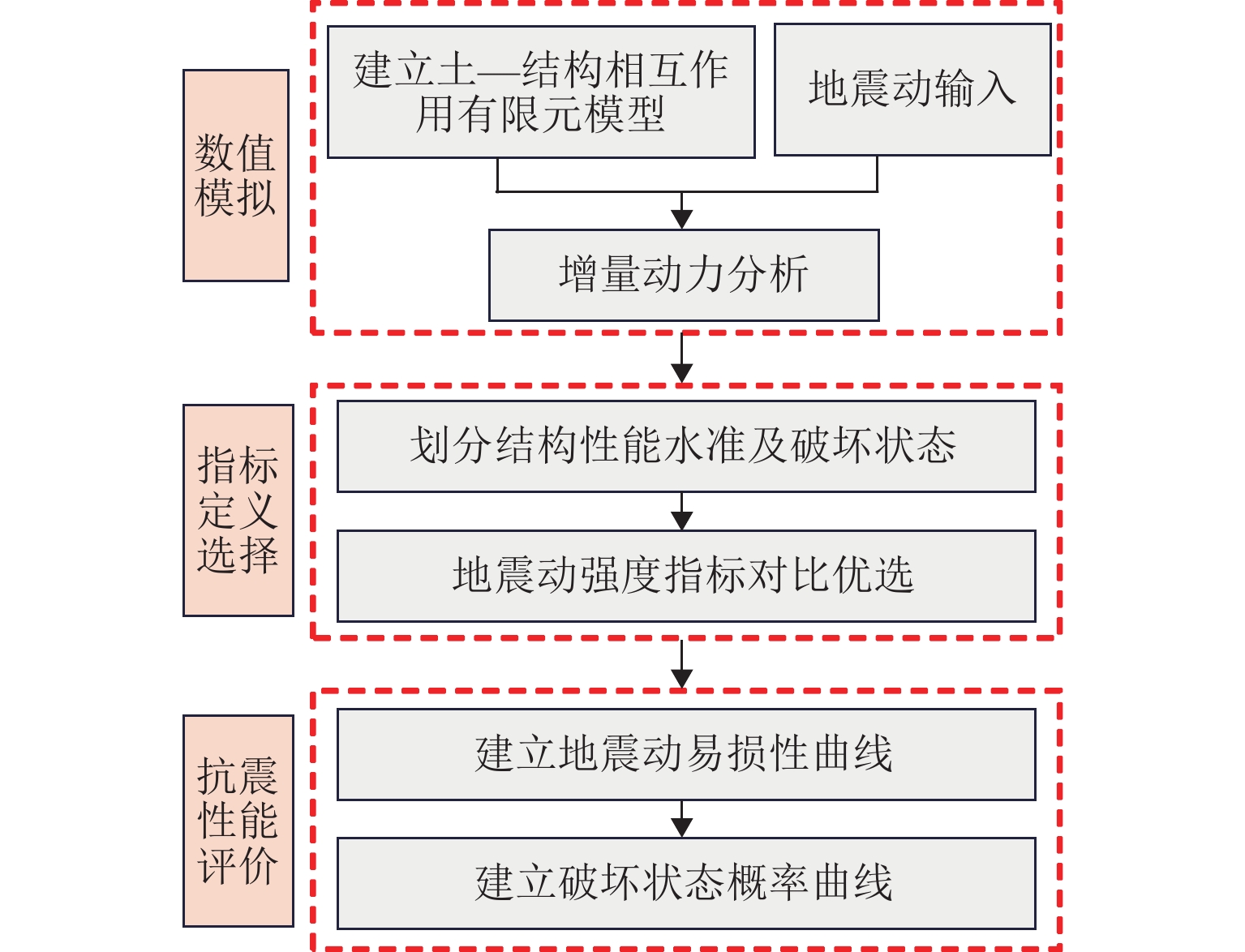
 下载:
下载:
